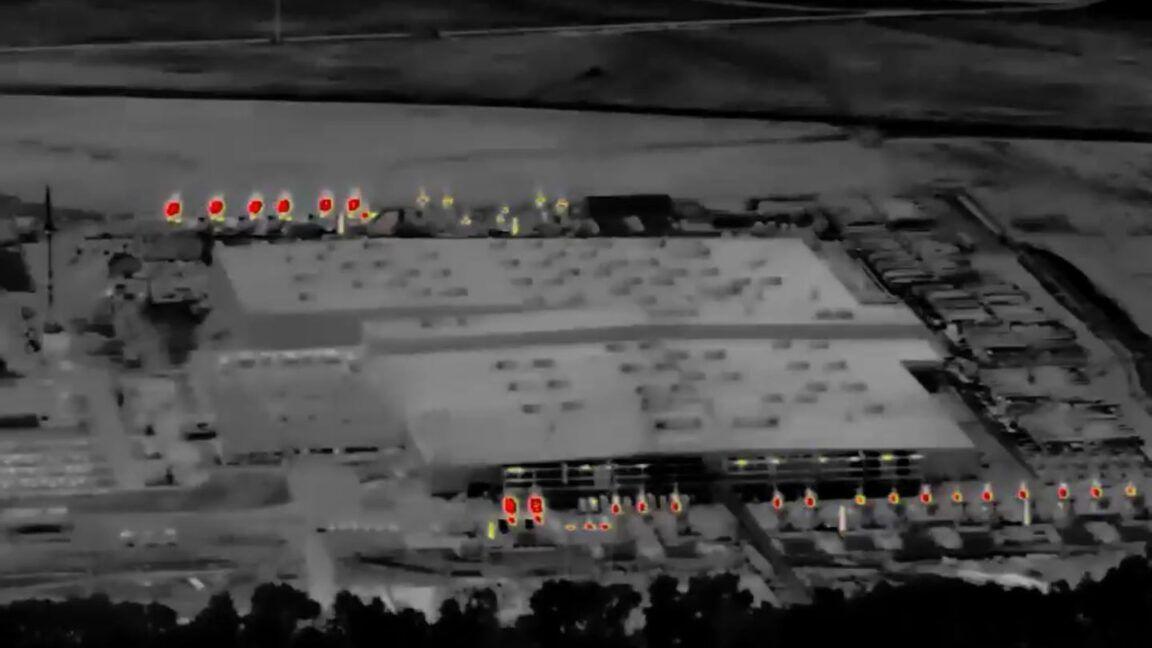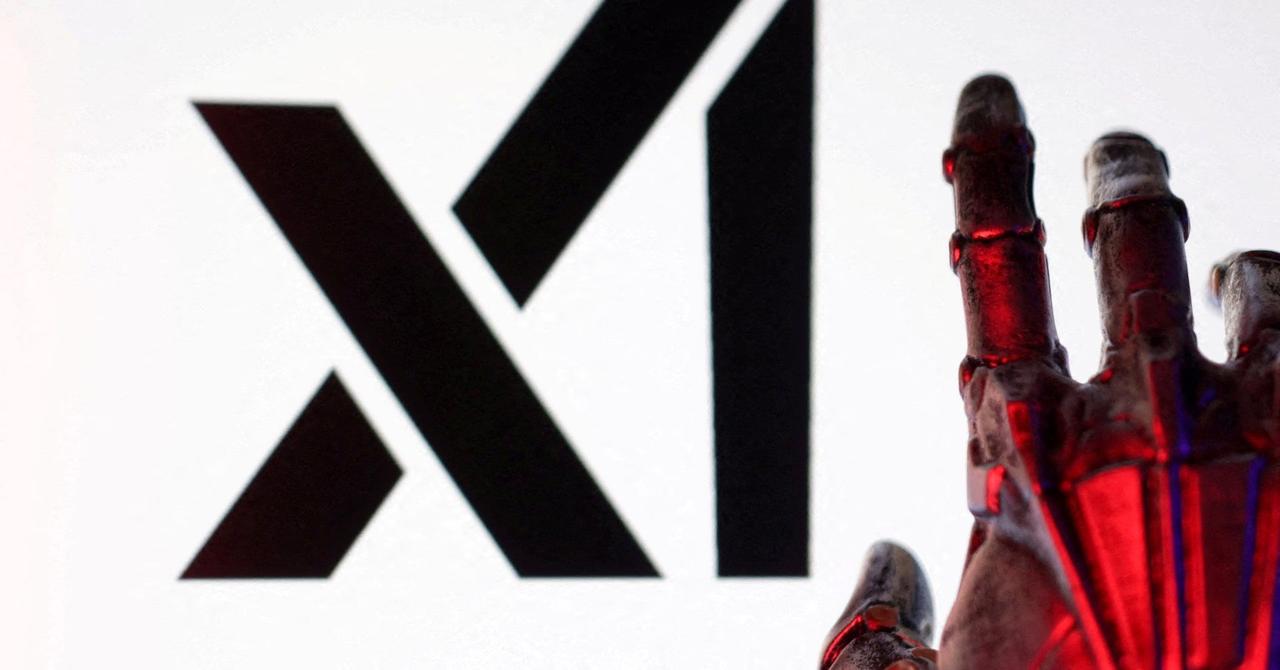Elon Musk's xAI Colossus Supercomputer: Power Demands and Environmental Concerns
3 Sources
3 Sources
[1]
Musk's Colossus is fully operational with 200,000 GPUs backed by Tesla batteries -- Phase 2 to consume 300 MW, enough to power 300,000 homes
Supplementary gas turbine generators will still be required for some time. The first phase of Elon Musk's xAI Memphis Supercluster has just reached full operational capacity as the on-site substation goes online and connects to the main power grid. According to the Greater Memphis Chamber, the site will receive 150 MW from Memphis Light, Gas, and Water (MLGW) and the Tennessee Valley Authority (TVA). Aside from that, the xAI Colossus supercomputer also boasts another 150 MW of Megapack Batteries that will serve as backup, allowing it to stay powered in case of outages or during times of increased demand. Musk first turned on his AI cluster in July last year, which housed 100,000 Nvidia H100 GPUs on a single fabric. The xAI supercomputer was set up at such an impressive speed, as it only took the company 19 days to make it operational -- something Nvidia CEO Jensen Huang said usually takes four years. However, this speed meant it had to cut some corners, such as launching without getting power from the grid, so the site used a plethora of natural gas turbine generators for its electricity needs. Initial reports say 14 generators, outputting 2.5 MW apiece, were parked on its premises, but some residents have recently complained that over 35 turbines have been spotted in the vicinity. This development means that the site's first phase of development can now run completely on power from the TVA, which sources about 60% of its capacity from renewable sources like hydroelectric, solar, wind, and nuclear. Because of this, xAI will now demobilize about half of the generators it temporarily used to power Colossus -- the other half will have to remain, though, to deliver the electrical needs of the second phase of the Memphis Supercluster. We do not expect this to stay on for long, though, as a second substation, which will deliver another 150 MW, is expected to come online in the Fall of this year. This means that Colossus will have a total capacity of 300 MW -- enough to power 300,000 homes. This is a massive power requirement, and there were previously some concerns about whether the TVA has enough capacity to accommodate it. The power provider has reassured various stakeholders that it can deliver that demand without affecting the supply to everyone else. Colossus initially launched with 100,000 Nvidia H100 units in July 2024, with its GPU count doubling to 200,000 in February 2025. Musk reportedly wants to scale the Memphis Supercluster to a million GPUs, and he's already trying to raise the funds to make his dream a reality. However, that many GPUs at the same site would mean that he'll need so much more electricity -- hopefully, the TVA can deliver that without affecting the power quality for the residents that live near the Memphis Supercluster.
[2]
xAI to pull half the gas turbines powering Colossus DC
Elon Musk's xAI is removing about half of the temporary gas-turbine generators powering its Colossus AI datacenter over the next two months, according to the Memphis Chamber of Commerce, not due to environmental concerns, but because a new nearby substation now supplies the needed power. Reportedly built in Tennessee in just 122 days, the AI supercluster initially featured 100,000 Nvidia Hopper GPUs. That number has since apparently swelled to 200,000. The system's reliance on mobile gas turbines for power drew ire from residents and environmental groups, who raised alarms about their impact on air quality and community health. The issue reached a flash point in April when aerial footage obtained by the Southern Environmental Law Center (SELC) revealed that the AI startup had deployed 35 generators instead of the 15 originally reported, raising concerns that the supercomputer may be among the largest contributor of smog-generating nitrogen oxides (NOx) in the Memphis area. Community leaders dismissed the findings, telling journos that Musk's LLM maker xAI had assured them that only 15 of the generators were actually in use, with the remainder there for backup power in the event of a failure. However, thermal imagery later released by the SELC appeared to show heat plumes from 33 of the 35 turbines, casting doubt on those assurances. A Politico report, citing estimates from the center, projected the facility could emit between 1,200 and 2,000 tons of NOx a year, based on manufacturer specs and assumed operating conditions. Estimates based on the EPA's CO-Benefits Risk Assessment tool (COBRA) suggest emissions at that level could result in health-related costs of up to $18 million for county residents and $160 million or more for all residents within the affected smog range. Turbines like these usually require permits from regulatory agencies under the US Clean Air Act. However, the 35 turbines currently employed by xAI don't require permits so long as they are used on a "temporary" basis for fewer than 365 days, Shannon Lynn, an environmental consultant hired by Musk's AI startup, argued during a recent webinar hosted by the Memphis Chamber. And because they don't require permits, it appears xAI is running them without the systems required to reduce harmful NOx emissions. According to the Memphis Chamber, xAI will remove half of its NOx-spewing temporary turbines by summer. However, that's not because of backlash from the community or concern for public health. Rather, it doesn't need nearly so many of them now that Memphis Light Gas and Water (MLGW) has completed work on a substation capable of supplying 150 megawatts of grid power to the site. With the nearby substation complete and an additional 150MW worth of Tesla batteries, which utilities use for large-scale electricity storage backup, the Memphis Chamber of Commerce says the generators used to power the first phase of the system are no longer necessary. "The temporary natural gas turbines that were being used to power the Phase I GPUs prior to grid connection are now being demobilized and will be removed from the site over the next two months," it said in a statement. But while xAI may be scaling back, it'll continue to rely on temporary turbines for "Phase II GPUs of xAI until a second substation, already in construction is completed and connected to the electric grid," the Chamber noted. Those remaining temporary turbines will be removed in the fall once this substation is complete. Even after all that, xAI plans to employ 15 permanent turbines at the supercomputing center to supply backup power to the facility in the event of an outage. Specifically, xAI plans to deploy eight new turbines with selective catalytic reduction (SCR) systems to combat these emissions, and retrofit seven of the existing "temporary" turbines with the tech for permanent use. According to Lynn, these turbines are being permitted under the Clean Air Act, and will bring the NOx pollution down from a rate of nine parts per million to two when they're operating. The Register reached out to xAI for comment and had not heard back at the time of publication. ®
[3]
Musk's Colossus data center for Grok is at the centre of an environmental row over air quality in South Memphis
"From the beginning, the company operated with a stunning lack of transparency that left impacted communities in the dark." If you've been keeping your finger on the pulse of AI developments, you'll know that there's growing concern about meeting the power demands of the data centers that train and run AI inference. Elon Musk's Colossus supercomputer that powers Grok, xAI's alternative to ChatGPT, tackles this by using over 30 methane gas turbine stations, but the construction has incurred fierce criticism over its impact on local air quality. When Colossus fired up for the first time last year, it was already making headlines. Partly because it took a mere three months to build, but also because its appetite for water and electricity was raising eyebrows. In the case of the latter, the system uses anywhere between 50 and 150 MW of power, and in order to meet that demand, xAI installed a number of methane-burning gas turbines. A report by the Southern Environmental Law Center (via Fudzilla) claims that these turbines were installed without permits and raises serious concerns over the potential impact these machines will have on the local air quality, due to their emissions. To make matters worse, it appears that xAI is now retrospectively applying for permits to use the turbines constantly. Memphis news channel WREG writes that the mayor of Memphis, Paul Young, had argued that things weren't as bad as they seem, quoting him as saying, "There are 35 [turbines], but there are only 15 that are on. The other ones are stored on the site." However, thermal camera footage taken by the Southern Environmental Law Center (SLEC) shows, for that moment in time at least, 33 of the turbines generating large amounts of heat -- in other words, they were in heavy use. SLEC goes on to criticise xAI's approach to the Colossus project: "From the beginning, the company operated with a stunning lack of transparency that left impacted communities in the dark. Even many Memphis city officials were unaware of the facility's plans and how it would be powered." One might think that using fossil fuels is a poor choice -- not just because of the environmental impact but also because of the rapid rise of renewable systems -- but with President Trump rolling out a raft of executive orders favouring the return to fossil fuels, it's perhaps not hard to see why xAI chose gas turbines over anything else. However, it's unlikely to be a long-term solution. There is no way to avoid the huge energy demands of any data center, and it's a problem that will only get worse, as more systems come online to meet the AI growth targets that Google, Meta, OpenAI, xAI, and Microsoft all have. Musk hopes to have Colossus expanded from 200,000 up to one million GPUs, and no amount of gas turbines can realistically hope to cover that. So, xAI will have to rely on the local electricity network and battery storage systems to meet that level of demand. But that passes the problem of generating the electricity onto somebody else, and they may well resort to using fossil fuels, even if xAI doesn't. If you don't use or have no interest in Grok, you might think that this has no real impact on PC gaming. However, it's worth noting that AMD, Intel, and Nvidia are all heavily invested in building and using data centers to train and run AI inference for their graphics technologies. In the case of the latter, Team Green ran such a system flat-out for six years, just to improve DLSS. While Nvidia's center is unlikely to have anything near the same energy demands as Colossus, it's a reminder that the cost of sustaining the growth of AI is more than mere dollars. Energy and the environment have a sizeable share of the bill, too.
Share
Share
Copy Link
Elon Musk's xAI Colossus supercomputer in Memphis reaches full operational capacity, raising concerns about its massive power consumption and environmental impact.

Colossus Reaches Full Operational Capacity
Elon Musk's xAI Memphis Supercluster, known as Colossus, has achieved full operational capacity as its on-site substation connects to the main power grid. The facility now receives 150 MW from Memphis Light, Gas, and Water (MLGW) and the Tennessee Valley Authority (TVA), with an additional 150 MW of Tesla Megapack Batteries serving as backup
1
.Impressive Scale and Rapid Development
Colossus initially launched with 100,000 Nvidia H100 GPUs in July 2024, doubling to 200,000 in February 2025. The supercomputer's setup was remarkably swift, taking only 19 days to become operational – a process that typically requires four years, according to Nvidia CEO Jensen Huang
1
.Power Consumption and Environmental Concerns
The supercomputer's massive power requirements have raised environmental concerns. Initially, Colossus relied on natural gas turbine generators, with reports indicating the presence of 35 turbines instead of the originally reported 14
2
. These generators have been criticized for their potential impact on air quality and community health.Emissions and Health Impacts
Estimates suggest that the facility could emit between 1,200 and 2,000 tons of nitrogen oxides (NOx) annually. The EPA's CO-Benefits Risk Assessment tool indicates that these emissions could result in health-related costs of up to $18 million for county residents and $160 million for those within the affected smog range
2
.Phased Transition to Grid Power
As the first substation becomes operational, xAI plans to remove half of the temporary gas turbines by summer. The remaining turbines will continue to power Phase II of the project until a second substation is completed in the fall
2
. After full grid connection, xAI intends to maintain 15 permanent turbines with improved emission control systems for backup power.Related Stories
Future Expansion and Energy Demands
Musk aims to scale the Memphis Supercluster to one million GPUs, which would significantly increase its power requirements. This expansion raises questions about the long-term sustainability of such massive AI infrastructure and its impact on local power grids
3
.Broader Implications for AI and Technology
The Colossus project highlights the growing energy demands of AI development across the tech industry. Companies like Google, Meta, OpenAI, and Microsoft face similar challenges in powering their AI initiatives. This trend underscores the need for sustainable solutions to support the rapid growth of AI technology while minimizing environmental impact
3
.References
Summarized by
Navi
[1]
[2]
Related Stories
Elon Musk's xAI Faces Pollution Allegations Over Colossus Supercomputer in Memphis
26 Apr 2025•Technology

Elon Musk's xAI Faces Environmental Scrutiny Over Unauthorized Gas Turbines in Memphis
10 Apr 2025•Policy and Regulation

Elon Musk's xAI Plans Massive Expansion of Colossus Supercomputer to 1 Million GPUs
05 Dec 2024•Technology

Recent Highlights
1
Google launches Gemini 3 Flash as default AI model, delivering speed with Pro-grade reasoning
Technology

2
OpenAI launches GPT Image 1.5 as AI image generator war with Google intensifies
Technology

3
OpenAI launches ChatGPT app store, opening doors for third-party developers to build AI-powered apps
Technology





